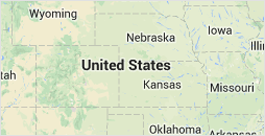Daniel Stewart
PHONE NUMBER : ------------
Map

How Does an HRA Work?
With all the different types of flexible spending and savings accounts available to you, it's easy to get mixed up and have trouble determining which type is best for you and your situation. In this article, we'll provide a brief overview of a health reimbursement arrangement (HRA), how it works, and how it differs from a health savings account (HSA).
What is an HRA?
A health reimbursement arrangement is an employer-funded plan that reimburses employees for certain medical expenses. In some cases, it may also provide reimbursement for some insurance premiums. If you have an HRA, any reimbursement money you receive is tax-free.
An HRA is not an account and your employer determines how much they will put into the plan. Once you incur an eligible medical expense, you can request reimbursement up to that amount. Some employers may also provide an HRA debit card, which you can use to cover medical expenses as you receive the services. If you use up all the allocated funds before the end of the year, you'll be liable to cover any additional medical expenses. Unfortunately, HRAs are not portable, meaning you cannot take the funds with you if you leave your company for another position elsewhere.
Benefits of an HRA
There are many benefits of an employer-funded HRA, such as:
- You can use the funds to cover a variety of medical expenses. Qualified medical expenses include prescription medications, annual exams, birth control, the meals you consume at medical facilities while you're receiving treatment, substance abuse treatment, psychologist services, transportation to medical services, and more!
- The funds can even be used for your spouse and dependents. If needed, you can also use your HRA funds to cover the costs of your spouse's or children's medical, dental, and vision care.
What's the difference between HRA and HSA?
Since there are many different similar types of accounts, you might be wondering about the difference between HRA and HSA accounts. There are a few differences:
- A health savings account (HSA) is owned by you, the employee, whereas an HRA is an agreement that is owned by your employer.
- If you leave your current job, you can take your HSA with you. However, you cannot take an HRA with you to another position with a different company.
- Although you can have both an HSA and an HRA, you can't choose which will cover a qualified expense. Instead, you'll be reimbursed by the plan your employer has set up to pay first. Once that primary plan is used up, the second plan will be used to cover any additional qualifying medical expenses.
If you have additional questions about an HRA, your employer can provide additional information.
Author Resource:-
Daniel Stewart has been helping people with their money management and personal finance with over 15 years' experience in business finance. You can find his thoughts at health investment blog.
